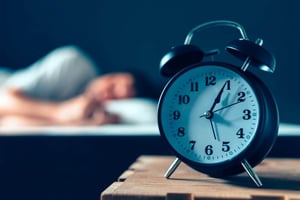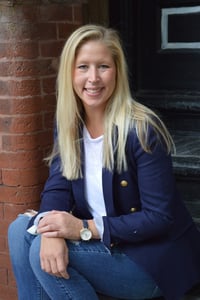MAKE A SPLASH
THIS SUMMER

Join Now For $0 Enrollment!
Learn MorePosted By: Alexis Allegra /
 What is Seasonal Affective Disorder?
What is Seasonal Affective Disorder?Welcome to January – the dead of winter where living in the northern part of the country means subfreezing temperatures, long cold nights and short gloomy days. It’s downright depressing! Although we may all feel the effects of these harsh months, about 6% of the population actually suffer from Seasonal Affective Disorder, or SAD, which is a clinical diagnosis found in the DSM-5, the manual used by health professionals to diagnose mental illness. Seasonal Affective Disorder is a type of major depression defined by its seasonal pattern. Those diagnosed with SAD will usually be affected about 40% of the year, though a small subpopulation may be symptomatic in the summer months, as well. Experts believe that SAD is likely related to the lack of sunlight we experience during the winter and have also found that it affects women more than men (with a ratio of about 4:1).
 How Do I Know if I Have Seasonal Affective Disorder?
How Do I Know if I Have Seasonal Affective Disorder?The most important thing to note is that SAD is not the same thing as the winter blues – like other types of mental illnesses it is characterized by impairment to one’s day to day functioning. When depression starts to affect your motivation or ability to work, socialize, exercise or take part in other activities that you usually enjoy, this could be an indication that you are clinically depressed. The signs and symptoms of SAD are akin to those of Major Depressive Disorder and include change in appetite or sleeping habits (sleeping too much or too little), loss of interest in once enjoyable activities, low energy, feelings of hopelessness, difficulty in concentration and having thoughts about death or suicide. During the winter months, folks dealing with SAD may also experience an increase in cravings for carbohydrates, overeating in general, weight gain and there may be a desire to hibernate or withdraw from social activities.
The good news is that there are several ways to combat some of the symptoms of SAD. You’ve probably heard about light therapy before but may not be aware of how effective a treatment it could potentially be for SAD sufferers. The idea behind light therapy is to replace the diminished sunlight in the fall or winter months with daily exposure to artificial light in the form of a light box. A light box provides bright, cool white fluorescent light to its users, which is many times brighter than ordinary indoor lighting. The recommended usage is about 20-60 minutes of daily exposure spanning a couple of sessions during each day, and always first thing in the morning. Experts recommend a 10,000-lux box for optimal effectiveness.
In addition to the mainstay light therapy, SAD sufferers should try to get outside as much as possible, despite the cold temps, even for just a 10-minute walk each  day. Regular exercise, indoors or out, helps to relieve stress and anxiety, which in turn may ease some SAD symptoms. And in any case of physical or mental distress, there are myriad benefits to taking care of one’s body through good nutrition and healthy sleep routines. And though it may be difficult to do so, reaching out to a support network of family and friends allows you to stay connected to those who love and care for you and may help to lessen the burden of depression.
day. Regular exercise, indoors or out, helps to relieve stress and anxiety, which in turn may ease some SAD symptoms. And in any case of physical or mental distress, there are myriad benefits to taking care of one’s body through good nutrition and healthy sleep routines. And though it may be difficult to do so, reaching out to a support network of family and friends allows you to stay connected to those who love and care for you and may help to lessen the burden of depression.
Some people may find that turning to professional help is the only way to effectively manage the symptoms of SAD. Cognitive Behavioral Therapy can be quite helpful in providing coping skills and offering alternative ways to address negative thoughts and behaviors that may be making sufferers feel worse. Psychotherapy may also include meditation practices, guided imagery exercises and other tools and resources for managing stress. Finally, the introduction of medication is often necessary to right the chemical imbalance of depression, even for a short time. Those with especially severe SAD symptoms may benefit from antidepressants and should consult their physician to discuss this course of treatment further.
If depressive symptoms persist into the spring and summer months, it is possible that you are experiencing a major depressive episode and a visit to your primary care physician or a mental health professional is probably a good idea. The American Psychology Association has a search feature that can be found here: https://www.apa.org/helpcenter/index.aspx and most health insurance websites allow you to search for mental health or behavioral health providers. If you or someone you know is experience suicidal thought, the National Suicide Prevention Lifeline is available 24 hours a day, 7 days a week at 1-800-273-8255.
The experts at CAC are here to provide comprehensive support in your wellness journey. You can stay active in even the coldest months with our expansive gym facilities, group fitness classes, personal training offerings, and more. Try Chicago Athletic Clubs for free with a membership pass or talk with one of our Chicago fitness experts today to get started!
 Alexis is passionate about fitness and currently teaches Les Mills SPRINT and GRIT at Chicago Athletic Clubs. Alexis has a Bachelor’s Degree in Psychology from the University of Michigan, a Master’s Degree in Psychology from the New School University and a Master’s certificate in Human Development from National Louis University.
Alexis is passionate about fitness and currently teaches Les Mills SPRINT and GRIT at Chicago Athletic Clubs. Alexis has a Bachelor’s Degree in Psychology from the University of Michigan, a Master’s Degree in Psychology from the New School University and a Master’s certificate in Human Development from National Louis University.
| Alex Card
| Chicago Athletic Clubs
| Chicago Athletic Clubs
| Chicago Athletic Clubs
| Chicago Athletic Clubs
© 2025 Chicago Athletic Clubs. All Rights Reserved. Privacy PolicyEmployee Login
https://www.chicagoathleticclubs.com/
https://www.chicagoathleticclubs.com/services/personal-training/
0
5000
true